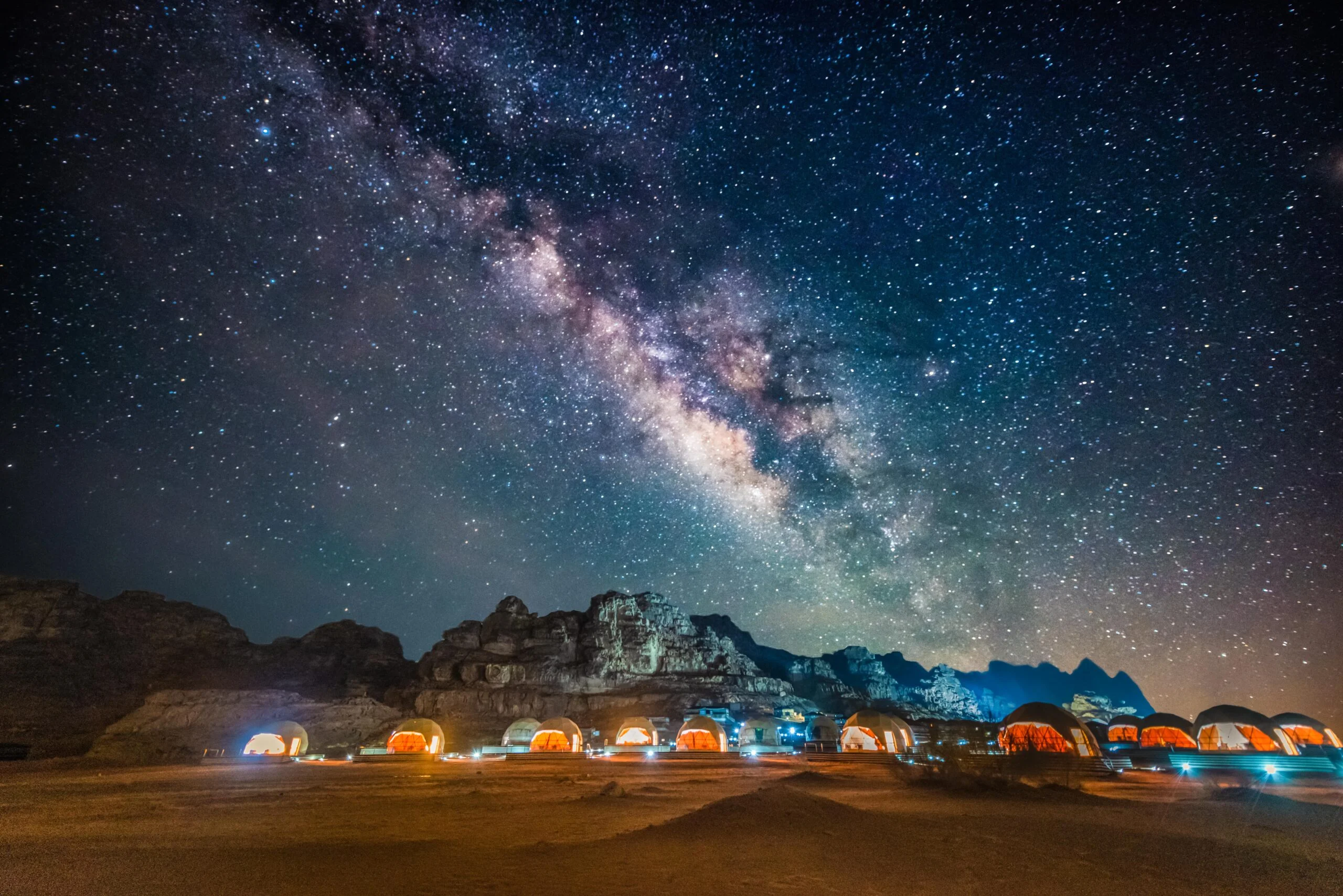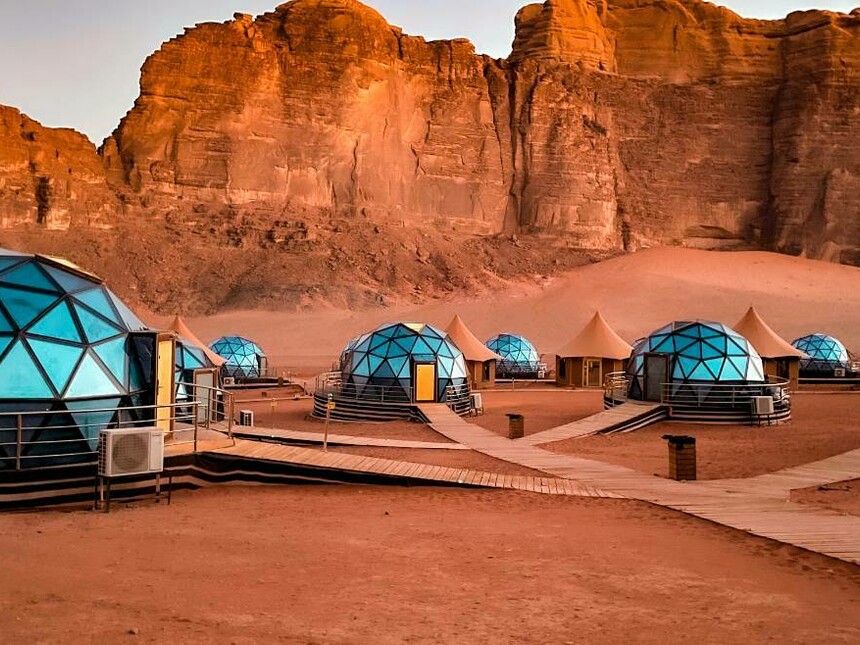



Wadi Rum is a protected desert wilderness in southern Jordan. It features dramatic sandstone mountains like the many-domed Jebel Um Ishrin, and natural arches such as Burdah Rock Bridge. Many prehistoric inscriptions and carvings line rocky caverns and steep chasms, such as Khazali Canyon. The natural watering hole of Lawrence’s Spring is named after British soldier Lawrence of Arabia, who allegedly washed there. ― Google
Spring (March–May) and Autumn (September–November) are the best times — pleasant weather (18–28°C) and clear skies.
Winter (December–February) is chilly, especially at night (can drop below freezing).
Summer (June–August) is very hot during the day (35–40°C), but evenings cool down.
From Petra: ~1.5 to 2 hours by car
From Aqaba: ~1 hour drive
From Amman: ~4 hours by car
You must pass through the Wadi Rum Visitor Center, where you pay the entrance fee and meet your camp host or tour guide.
No public transport into the protected area — arrange pickup with your camp or guide.
Lawrence’s Spring – Named after T.E. Lawrence ("Lawrence of Arabia")
Khazali Canyon – Narrow gorge with ancient Nabataean and Thamudic inscriptions
The Seven Pillars of Wisdom – Rock formation near the entrance, named after Lawrence's book
Um Fruth Rock Bridge – A natural sandstone arch you can climb
Burdah Rock Bridge – One of the tallest natural arches in the world
Sand dunes – Ideal for hiking, sandboarding, or just relaxing
Ancient petroglyphs and inscriptions – Scattered throughout the desert
Jeep tours – Half-day, full-day, or sunset tours with a Bedouin guide
Camel rides – Traditional and slow-paced desert travel
Stargazing – Wadi Rum’s night skies are some of the clearest in the world
Hiking & scrambling – Trails up Jebel Umm Ad Dami (Jordan’s highest peak) or Jebel Burdah
Rock climbing – For experienced climbers, several routes exist on sandstone cliffs
Hot air balloon rides – Available seasonally for aerial desert views
Camping overnight – Stay in a Bedouin-style tent under the stars
Bedouin camps – The most authentic and popular option; many include meals, stargazing, and activities
Ranges from basic tents to luxury domes with private bathrooms
Bubble tents & luxury domes – Offer panoramic windows for stargazing and comfort
Eco-lodges – Focus on sustainability and traditional design
Wild camping – Can be arranged with a guide for a true off-grid experience
Most camps include meals:
Zarb – Bedouin-style BBQ cooked underground
Mansaf – Traditional lamb and rice dish
Fresh salads, flatbreads, hummus, and stews are common
Tea and coffee are central to Bedouin hospitality — often flavored with sage or cardamom
Wadi Rum is home to Bedouin tribes, who maintain a strong connection to the land
Visitors are often welcomed with tea, music, and stories
Respecting local customs (modest dress, polite behavior) is appreciated
It's a place of silence, stars, and simplicity — the lifestyle is deeply tied to nature
Dress in layers – Hot days, cold nights
Bring a flashlight or headlamp – Camps may have limited lighting
Wear sturdy shoes – For hiking and walking on sand/rock
Carry cash – Many camps and guides operate in cash only
Stay at least one night – The full magic of Wadi Rum is experienced under the stars
Don’t go without a guide – You’ll need a Bedouin escort to explore the protected areas safely